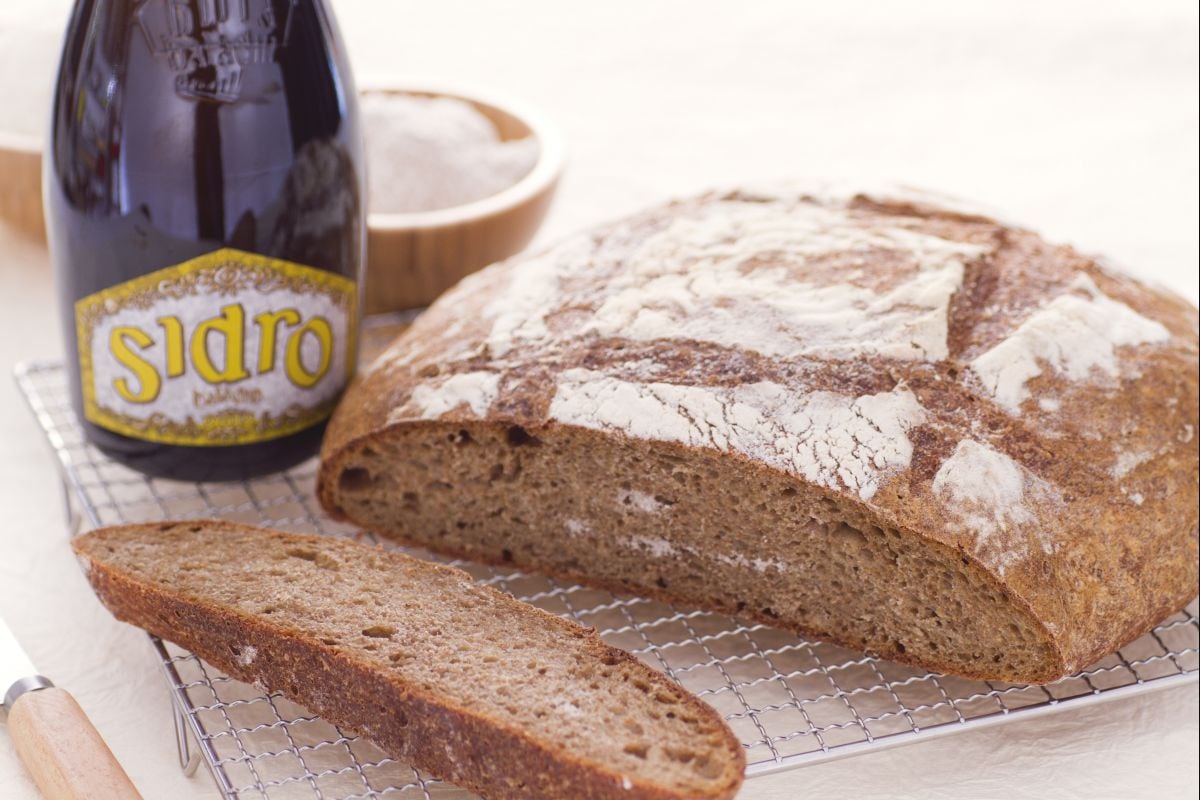Soft and Fragrant Homemade Cider Bread

- Lactose Free
- Vegetarian
- Vegan
- Energy Kcal 207
- Carbohydrates g 40.2
- of which sugars g 2.9
- Protein g 7
- Fats g 0.9
- of which saturated fat g 0.19
- Fiber g 3.8
- Sodium mg 446
- Difficulty: Average
- Prep time: 40 min
- Cook time: 1 h 20 min
- Serving: 10
- Cost: Very low
- Note plus the bread rising time
PRESENTATION
Pane al sidro is really one of those breads that just stands out—way more than your usual loaf. Why? Because it uses apple cider, which makes it both moist and gives it that sweet aroma. And you know what? It's not your everyday bread. Each slice feels super special, different from the usual stuff. People really love how the cider gives the bread a tender bite. Seriously. It has an almost fruity, golden scent that hits you as soon as you cut it. The cider bread recipe is the kind of thing that gets people talking, especially when you slice it up and pair it with some nice cured meats and cheeses. For real. But honestly, it’s also really good all on its own. Maybe just a bit of butter to keep things simple, but still packed with flavor.
Don’t expect it to taste just like apples, though—it’s more about those subtle background notes and that soft texture. Which is great. Cider bread is so fun to eat. Folks into home baking know it’s rare to get a bread this soft and aromatic without throwing in a ton of extras. For sure. It’s a cool swap for regular country bread, especially when you want something that looks and smells a little different when friends come over. Boards of prosciutto, salami, and mild cheeses work great with this bread since the cider adds just enough flavor to keep things interesting but not so much that it takes over.
People who like trying new cider recipes or different kinds of baked goods usually find this bread a pleasant surprise. And you end up with a crispy crust on the outside and that moist, almost cake-like crumb inside. Really, really memorable. For anyone who likes to mix up their bread routine, or just wants something to impress guests, cider bread is a pretty good pick. It’s one of those unique options that not only tastes amazing but also brings a special touch to any meal. Pretty much.
- INGREDIENTS
- Sidro cocktail 3 glasses (750 ml)
- Whole grain flour 4 ¼ cups (600 g)
- Manitoba flour 3 ¼ cups (400 g)
- Brewer's yeast 1 ½ tsp (7 g)
- Fine salt 3 ½ tsp (20 g)
- Malt 1 tsp
How to prepare Soft and Fragrant Homemade Cider Bread

To make the cider bread, sift the bread flour and whole wheat flour into a large bowl 1, add the dry yeast 2 and the malt. In a small bowl, dissolve the salt in a tablespoon of cider taken from the total amount 3,

add the mixture to the dough 4, slowly add the cider in a thin stream, gradually gathering the ingredients with your hands 5. Transfer the dough to the work surface and continue kneading until it is smooth and soft 6.

Transfer the dough to a bowl, cover with plastic wrap 7 and let rise in the oven turned off with the light on for 2 hours. Take the bread proofing basket, the bannetons. Line it with muslin and flour it generously 8, If you don't have muslin, you can use a clean tea towel. Grease a work surface with oil 9

transfer the dough here, so it won't stick, and you won't need to add more flour. Shape the dough into a rectangle 10, fold over the long sides 11, then fold over the short sides 12.

Gather the dough into a spherical shape and place it in the bannetons 13, cover with plastic wrap 14 and let rise again in the oven turned off with the light on for 1 hour, the dough should reach the edge of the basket. Flip the well-risen bread onto a baking sheet lined with parchment paper 15

make a cross cut on the surface with a sharp knife (16-17). Bake the bread, making sure to place a bowl of water at the bottom of the oven; this will create a humid environment that will aid in baking the bread. Use a terracotta bowl or make sure it is oven-safe. Bake the bread in a static oven preheated to 482°F for 40 minutes. After this time, remove the bowl of water and lower the temperature to 392°F, continue for another 20 minutes, then turn the loaf upside down and continue baking for another 20 minutes. Turn off the oven and let the bread cool with the oven ajar, then remove it 18.